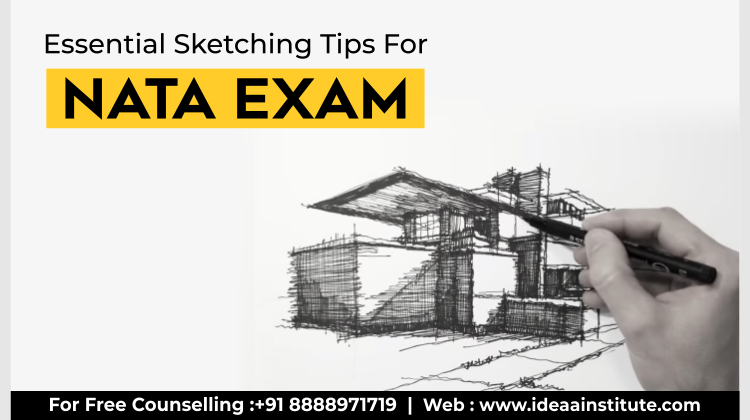Architects have relied heavily on sketching and technical drawing skills for as long as anybody can remember.
The intro of computer-aided design (CAD) software during the 1960s profoundly impacted the architectural drafting field. And with it, details that were previously impossible to include in the sketch might be included.
While digital tools have advanced in recent decades, architects still benefit from traditional architectural sketching because of the advantages it provides to their ability to visualize and be creative. You must practice your drawing abilities to do well on the next NATA test.
It is crucial to begin sketching lessons with the fundamentals. Cramming and memorization are counterproductive and should be avoided. If your drawing abilities may need some fixing, here are some essential pointers to get you started.
Understand Your Tools
The process of sketching is very important to the overall architectural design. This is the first step that must be taken when constructing anything from scratch.
Many well-known artists and architects have indicated that graphite pencil is their media of choice. On the NATA exam, applicants’ ability to use pencils effectively is evaluated by a series of questions.
It is not required to spend an outrageous amount of money to prepare for the NATA exam. You shouldn’t be concerned with anything beyond the absolute necessities, such as
- HB pencils
- Standard sharpener
- Soft rubber eraser
- Mono Zero eraser etc.
Your list may require expanding to include other tools.
Start With Simplified Shapes
Many students make this fundamental blunder while they are just beginning to improve their drawing abilities. Most of them go straight into the particulars in the beginning, only to be taken aback by how poor the quality of their work eventually seems to be.
When starting a drawing, it is helpful to see the subject as a collection of fundamental three-dimensional shapes such as cylinders, cubes, cones, and prisms, among other examples.
After you have ensured that the proportions are correct and that the components are aligned, you may next tweak your drawing to emphasize the more minute details.
Have A Better Grip On The Edges
You have a choice of four distinct techniques for defining an object’s edges, including:
- Unpolished: The spectator must interpret the edges.
- Lost: When the backdrop and the item meld together.
- Rigid and thin: Gives the thing a solid boundary.
If required, you could also combine some of them.
Improve Your Observation Skills
When attempting to represent to the viewer how an object appears in a drawing, it is essential to understand the interaction of texture, shape, and line. This may be accomplished by practicing sketching the thing in question. If you can observe details, you will be able to make drawings that are vivid and realistic.
If you have the chance, spend the weekend in a nearby park, beach, or railway station. Observe your surroundings, and create something based on what you saw when you returned to the studio.
If time is of the essence, your greatest alternatives consist of snapping a fast snapshot and redrawing the sketch on paper.
Several NATA instructors promote the idea that avoiding using any kind of reference material is the most effective method to advance in one’s drafting career. However, there are situations in which this is not the case at all.
The greatest artists, sculptors, and architects in the history of the world have always looked to precedents and models for inspiration.
When you use a reference, you’ll find that it helps you build improved eye-hand synchronization and heightened observation abilities once time has passed.
It is time to begin snapping pictures at any and all opportunities that present themselves. Very soon, you’ll have a plethora of photographs from which to make your selection. You may create an unbreakable mental cheat sheet for yourself if you put in the necessary amount of time and effort.
Conclusion
There is no going around the point that there are no fast cuts to a higher mark on NATA examinations. Within the scope of this post, we have discussed a few fundamental procedures that must be adhered to while drawing sketches.
However, remember that the information presented here is the tip of the iceberg and that you will pick up many more useful hints by participating in our in-person sketching sessions. Your ability to enhance your drawing abilities in the most effective manner possible and with assured results may be improved via our carefully organized classes and workshops. To learn more, contact us at IID today!












